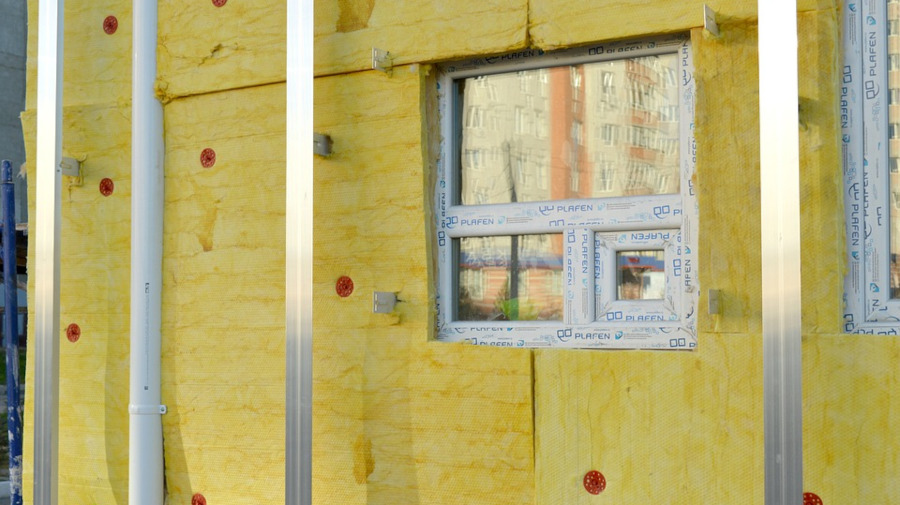All About Insulation: What You Should Know
Insulation is a simple but crucial part of the construction of any commercial building. Insulation aims to keep heat from moving from warmer to colder spaces. By eliminating heat (or cooling) loss and reducing drafts, insulation saves you money and makes the building more comfortable.

The Importance of Insulation
Reduces the damage to the HVAC system: When HVAC systems work overtime to compensate for the impact of poor insulation, they would be subjected to more wear and tear than they will be under more ideal conditions. This stress increases the likelihood of a machine failure or breakdown, necessitating an expensive fix.
It would also reduce the equipment's useful life, making it possible to require a total replacement earlier than expected. The measurement of an insulation's efficiency is its R-value. It is a measurement of how much it resists heat transfer. To achieve minimum insulation ratios, different areas of the world need different R-values.
Note: The higher the R-values, the better the insulation.
As HVAC systems are on the roof of most buildings, it is crucial to have an easy and safe way to access them. To not lose any heat or cool when accessing these parts, consider installing some i nsulated access doors and panels. It will provide a convenient way for service personnel to access your roof areas.
Reduces cost: Your boiler, heat pump, air conditioner, or furnace would have to work overtime to keep up with temperature fluctuations in a poorly insulated structure. Depending on the season, your HVAC equipment may need additional cooling or heating to compensate for the lack or addition of heat.
You'll not only waste the electricity you've already paid for to heat or cool your home, but you'll also have to ask for more to compensate. This situation will result in substantial energy and financial loss. Having adequate insulation will prevent this type of scenario from happening and will reduce your electric bill significantly.
Maintains the level of comfort: A well-insulated building is more secure than the ones that are not. Heat will leave the structure in the winter and enter during the summer if it is not adequately insulated. This heat transfer is minimized or removed with adequate insulation, and your indoor spaces will remain at the temperature you want.
It's important to consult a spray foam insulation contractor before starting your insulation project to ensure you're using the right materials for your space. They can also help identify areas where insulation is most needed, ensuring maximum energy efficiency and comfort for your home or business.
How Does Heat Travel?
Heat finds equilibrium, making the warm air travel from a cozy location to a cold one and vice versa: the quicker the air travels, the more significant the gap. This movement is how drafts get produced inside and why cold outside air passes through an open window on cold days. Here are the three ways heat travels.
Conduction: The temperature increases as warm air rise to the ceiling and cold air descends to the floor in a home. Warm air rises and radiates heat to the surfaces it passes through, allowing it to cool, sink, and is absorbed by cooler rising air.
Radiant: The heat coming from the sun. The heat travels in a straight line to warm colder objects.
Convection: The heat coming from heat-absorbing objects like metal.
Insulation Types for Buildings
Rock wool: Rock wool (or mineral fiber) insulation is widely used to insulate tubing and is from high-density mineral material. Pipes, water heater tanks, and other features that include insulation covered in blanket-style insulation constructed from the same material provide good insulation.
Loose-fill insulation: Often, cellulose or fiberglass pellets are in loose-fill insulation. This insulation fills places like floors and wall cavities. It's beneficial for insulating areas with odd shapes that are impossible to penetrate with other forms of insulation.
Spray foam: This insulation is a semi-liquid substance that you can pour into places with the aid of pressurized devices. When the foam dries, it becomes light but thick, sealing air leaks and providing excellent insulation.
Fiberglass board: Insulating HVAC ductwork with rigid fiberglass board insulation is widespread. These ducts are made of a thin metal that allows warm air to escape or cold air to warm up. This process, halted by board insulation, saves energy and resources.
Fiberglass blanket: It is a typical type of insulation consisting of several layers of fiberglass stacked together to form a condensed sheet of insulation or blanket. In most cases, the cover gets sandwiched between two thick sheets of paper or cardboard. Blanket insulation, also known as batt or roll insulation, is often installed between joists and beams in the walls and floors.
Having adequate insulation is an essential part of living a cost-effective and comfortable life. Establishments should make efforts to maintain this necessary component of the building. A professional's advice is a necessity when deciding to do so. Consult a competent pro and ask what services they can offer for you and your establishment.